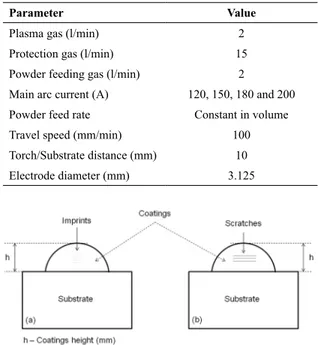Effect of Dilution on the Microstructure and Properties of CoCrMoSi alloy Coatings Processed on High-Carbon Substrate
Texto
Imagem


Documentos relacionados
The hardness map of the welded joint is shown in Figure 4. An overall increase of hardness is observed due to reined microstructure on the SZ. The ad- vancing
The dilution displaced the chemical composition of coatings and altered the hypereutectic comprised of primary Laves phase and eutectic lamellar (Co SS + Laves phase)
On the other hand, coatings produced in baths containing allyl alcohol and sac- charin presented smaller hardness values due to their stress relieving action.. The buffering effect
Further investigations are under way to assess the influence of niobium carbide content on the microstructure and its effect on hardness and fracture toughness of the
The effect of experimental parameters on the deposition rate and the coatings performance, including corrosion resistance, interfacial adhesion strength and hardness,
The expected hypereutectic microstructure comprised of primary Laves phase and eutectic lamellar with Laves phase and Cobalt solid solution observed on cast CoCrMoSi alloy T400
Mechanical properties of the rolled sheets Figure 6 shows the effect of the rolling reduction amount on the Vickers Hardness HV for ZK60 alloy sheets produced by TRC
When aluminum is added to the coatings, the hardness of the coatings is improved due to the formation of a composite material, and a ternary phase appears at the higher